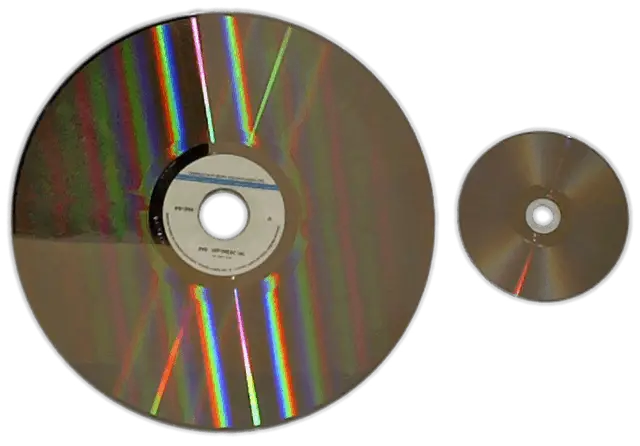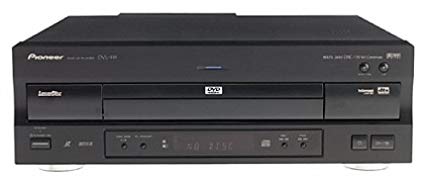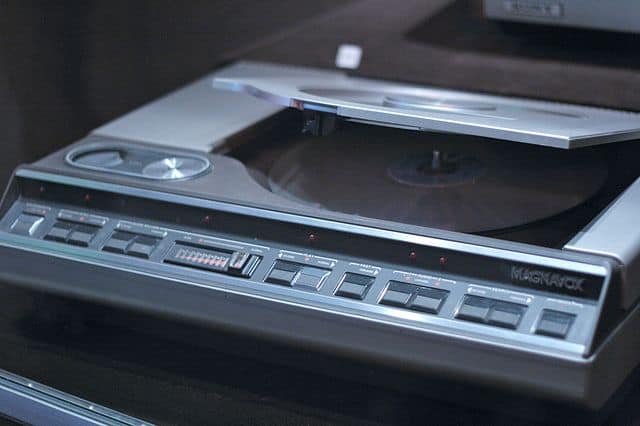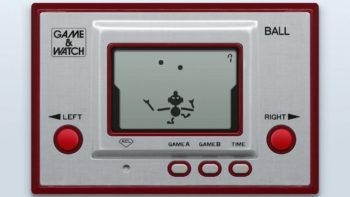
The 1980s brought us a lot of new technology all at once. Some, like the VHS, became commonplace and others had trouble lasting.
LaserDisc was a technology that goes all the way back to the ‘50s and became commercially made in the late ‘70s. It was pushed in the ‘80s as being superior to the VCR and even though it had advanced technology there were many problems that lead to its eventual downfall.
I never owned a LaserDisc player. They were crazy expensive but still seemed like the height of technology. The only time I saw them play was at our local video store called Jumbo Video. It was one of those inventions that seemed like having the future with us now.
The LaserDisc was more than just a giant C.D and in researching this I was pretty amazed about how much went into the development and how far back this actually went. LaserDisc definitely had some massive problems with it and I don’t think they considered the consumers needs the same way Betamax did that eventually led to its downfall. It would compete against VHS and then the DVD which ultimatly took over from all of them.
Still, the LaserDisc remains a significant part of the ‘80s even if it’s just from a novelty standpoint. No one really owned one but everyone knows it.
Let’s check out all things LaserDisc.
What Was LaserDisc?
Just in case you were unaware a LaserDisc was a record-sized C.D looking disc. It was 12 inches in diameter and made up of two-sided aluminum discs layered in plastic. As much as it had a digital appearance the LaserDisc was actually analog which I was never aware of. Like a CD or DVD, the surface was made up of all these little pits where the information was contained and accessed by laser. They used analog FM stereo sound and also digital audio and the discs were abel to store more information on them.
It’s actually really hard to explain the technical details on how the LaserDisc worked so I’m going to let Mr. Wizard do it:
The Early History Of LaserDisc
So it’s pretty crazy but the invention of it goes all the way back to 1958 and was called opitcal video recording technology. The patents were purchased by MCA in the 1968 and in 1969 Phillips had developed one of the first versions of the LaserDisc using a disc that used a reflective mode compared to the MCA transparent mode.
There was a lot of technology and design to sort through and in a rare move Phillips and MCA actually joined forces to develop this format and were able to display one of the very first versions in 1972.
LaserDisc would hit the market years later though, in 1978 in Atlanta, Georgia when it would first become available. This is pretty crazy to think about when you consider this is only a few years after the VHS VCR came out. I never thought how this was technically the third format offered to the public along with VHS and Beta.
It was also set the stage for the compact disc that would come out about four years later.
Those first LaserDisc players were originally called the MCA DiscoVision which is just hilarious. Way to date yourself MCA. That’s like calling a new
Phew, that’s much better.
Phillips and MCA were still in the mix though with Phillips focussing on making the players and MCA would make the discs.
Early Use Of The New LaserDisc
The Phillips/MCA mix would end up not working and it seemed like the technology wasn’t initially used as intended. When LaserDisc first came out the Museum Of Science and Industry in Chicago would use them as data storage so that people could come in and look up newspapers on LaserDisc. People would be able to look up any front page of any issue of the Chicago Tribune.
People still had a focus on using them for entertainment and at the same time the museum in Chicago was playing around with the new technology the very first movie was released on December 15, 1978:
Jaws.
The First LaserDisc Players
Did you ever get to hold a LaserDisc? They were surprisingly heavy and required a pretty solid unit to play them in. The earliest players actually used helium-neon laser tubes to read the discs which sound kind of terrifying to have that in your home. In March 1984 the first player with a proper solid-state laser was released by Pioneer.
The early players also loaded from the top kind of like a record player but this new Phillips player from 1984 would load in the front the way you would with a DVD or CD player. Interestingly, LaserDisc players made from the mid-‘80s and on could actually play CDs. The problem is these early players lead to poor picture quality, it turns out that helium and neon worked better for better for playback.
The Advantages Of LaserDisc
This is probably a good time to look at the pros and cons of LaserDisc because it had many of each. Here are some of the pros that came from them:
- You could get a great degree of control over the playback process. It actually had better controls in that way than DVD
- With LaserDisc, you could jump to any frame in a movie just by entering the frame number in the remote
- A damage spot on a LaserDisc can be played over or just skipped by. On a DVD or Blu-Ray, you can be pretty screwed and you can’t play past the damage
- It’s thought, by audiophiles, that the sound on LaserDisc is superior to that on DVD. It’s thought that LaserDisc has a “smoother” and more “film-Like” sound to it
- LaserDisc couldn’t block out navigation controls and to me this is big. This is how DVD will block the ability to control being able to automatically jump to the movie and force you to sit through crappy previews.
Problems With LaserDisc
Ultimately, the problems that existed with LaserDisc lead to its demise more than the advantages it had. But when it hit the market here were some of the initial complaints about the format:
- The discs were heavy (about a ½ pound) and could be easily damaged
- Since they were so heavy it took a toll on the components of the players leading to more noise than other format players
- You couldn’t record on them. We’ll get back to this later, it’s significant…
- Playback was limited to 30-36 minutes per side. This is also significant… When one side was finished you actually had to get up and flip over the disc like you would with an archaic record. Future units would be able to “flip” the disc by changing the direction of the laser inside but this might have been too little too late. And expensive…
- Even though the discs could play past scratches and such they still needed to be immaculate to not have parts skipped over. Even slight scratches and dust could result in read-errors which would cause playback problems
- The discs had to be PERFECTLY flat. We’re talking straight as a frozen rope in winter. Any sort of bending on the disc would result in “crosstalk” by the laser and distort the picture. This isn’t even just due to neglect as brand new factory discs that had any slight warping would create this problem
- A huge problem is there was actually a difference between discs and players. Whereas all DVD’s are the same the quality of LaserDiscs could vary depending on the manufacturer. Same thing with the players. A low-quality disc could still look bad on a high-end player and if you had a large T.V the low quality would be even more evident. This lead to so many bad possible combinations between disc manufacturers and models of players. There was no consistency.
- There were a lot of poorly put together discs. It wasn’t a single unit but two sides basically glued together. Some companies used a cheap adhesive in the mold of George Costanza and the adhesive would leak through and damage the disk leading to huge playback problems
Comparing LaserDisc With VHS

A lot of the comparison here did center around the winning disc format of DVD but DVD wasn’t on the scene yet in the 1980s so let’s look at the comparison with the king of home video.
Going into the mid-‘80s VHS was clearly winning the format war between them and Beta but how did it stack up to the new shiny counterpart? Right off the bat, there is the obvious picture quality. And it was a substantial quality. When you look at horizontal resolution LaserDisc provided around 425 lines while VHS only had 240.
A huge advantage was that LaserDisc had more room to store audio and could contain multiple audio tracks. This allowed for something called a “directors commentary” which we take for granted today but was a big deal when it came out. They could now put out “special editions” with these extra tracks and the first to do it was 1984 Criterion Collection of Citizen Kane. This first of its kind disc contained interviews, commentary tracks, documentaries, and still photographs.
This set the standard for all future special edition releases which are pretty much all standard on any release.
LaserDisc was also initially cheaper to produce than VHS cassette because they didn’t have all the moving parts that a VHS did. A VHS has 14 parts including the tape and a LaserDisc has one part with 5-6 layers.
LaserDisc also had a longer lifespan than VHS because the discs were read optically and not mechanically how a VHS had to be. This mechanical reading lead to more wear and tear and the dreaded moment when you would eject a tape and the tape was still deep in the VCR
For kids in the ‘80s, this was your worst nightmare coming true.
By the end of the 1980s things were getting more expensive and pressing discs was costing $5 per two-sided disc due to the rising cost of plastic mechanisms that would do the stamping. At the same time producing a VHS tape was getting cheaper to copy and produce and was getting down to only $1 per cassette
Looking at this you might wonder why in the hell LaserDisc didn’t take over the format wars beating out VHS.
So what happened?
The Downfall Of LaserDisc
Like anything, you can’t pinpoint the downfall of LaserDisc to one thing but a lot of factors. I think at the most basic level it probably came down to price. LaserDisc machines were not cheap and neither were the discs. The first players cost upwards of $1000 and actually ended up being in nearly one million homes by the end of the decade.
LaserDisc was embraced more by cinephiles as they tend to do with more advanced formats such as Blu-Ray but for the average person who didn’t care that much about picture or sound, it didn’t make sense to spend the cost of a used car on a player when you could get a VHS for next to nothing.
Another huge thing is you couldn’t record on them. They were for occasional use whereas the VHS had a place in everyday life and was used constantly by the whole family. You could fit 6 hours or so on a videotape for only a few bucks. It just wasn’t an option with LaserDisc.
Another factor was that LaserDisc wasn’t for lazy people. I’m not joking. Think of when you’re comfortable on the couch and have to think about getting up. It’s one of the worst things in the world. Or if you’re on the couch and drop something that’s out of reach? It may as well be on the moon.
Every LaserDisc had to be flipped over and for longer movies, it might need 2-3 discs. That was a hard pass for a lot of people. If you’re spending $1000 it better switch the discs its damn self,
Final Thoughts On LaserDisc

LaserDisc is cool but it clearly wasn’t meant to be. It’s kind of like the Concorde; it was maybe a bit ahead of its time and could have benefited from being released later. The problem was that if that was even an option DVD would come cruising through and become the dominant format.
It’s fun to look back on LaserDisc and see it for being part novelty but part ingenuity. I don’t know anyone that owned one but I think everyone really wanted to have it. It was the definition of latest and greatest but it ended up being kicked to the curb alongside its old friend Betamax.
May they rest in pieces.



